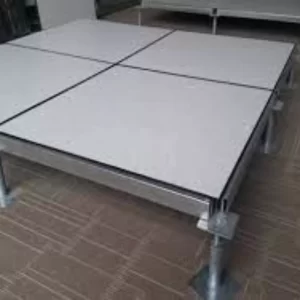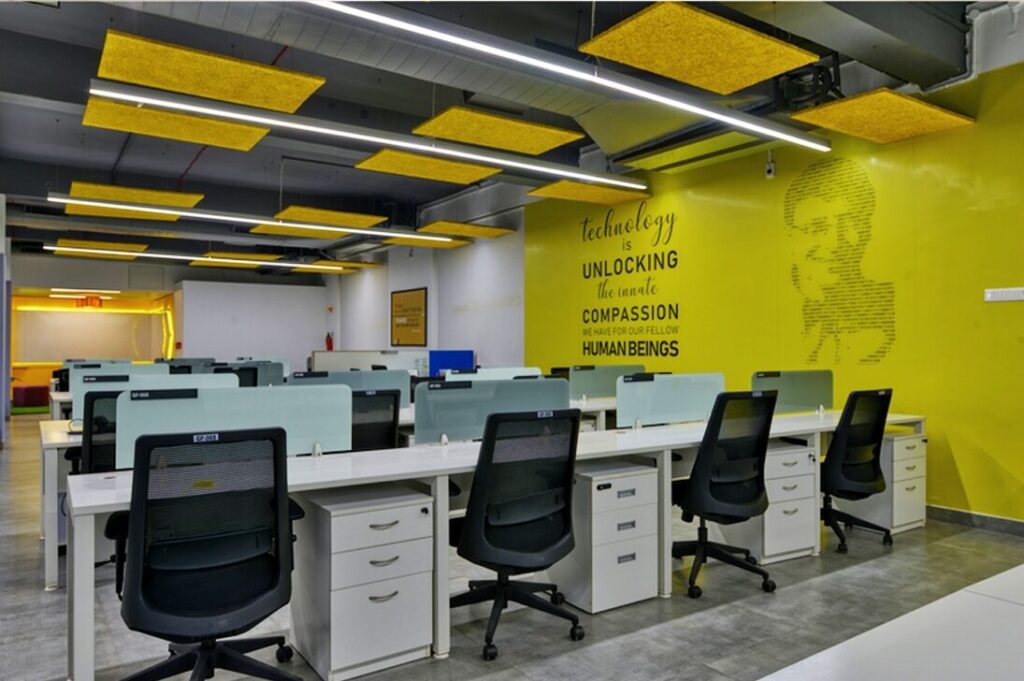Why Raised Access Flooring is a Good Choice for Hospitals
Introduction
Why Raised Access Flooring is a Good Choice for Hospitals? In the fast-paced environment of hospitals, having a well-designed infrastructure is crucial for efficient operations and the delivery of quality healthcare services. One essential component that plays a significant role in hospital design is the flooring system. Raised access flooring has emerged as a popular and practical choice for hospitals due to its numerous advantages. This article explores the benefits of raised access flooring and why it is a smart choice for healthcare facilities.

Introduction: The Importance of Flooring in Hospitals
When it comes to designing hospitals, every aspect of the infrastructure is carefully considered to ensure optimal functionality and patient care. The flooring system is no exception. Hospitals require a flooring solution that is not only durable and aesthetically pleasing but also offers several other benefits such as enhanced accessibility, efficient cable management, and improved infection control.
Understanding Raised Access Flooring
Raised access flooring, also known as access floors or raised floors, is a modular flooring system that elevates the floor surface above the structural subfloor. It consists of individual floor panels supported by an understructure of pedestals or adjustable legs. The void created between the subfloor and raised floor panels allows for the integration of various services, such as electrical, data, and HVAC systems.
Enhanced Accessibility and Flexibility
One of the key advantages of raised access flooring in hospitals is the enhanced accessibility it provides. The void beneath the floor panels allows easy access to the services running underneath, facilitating maintenance, repairs, and upgrades without causing disruptions to the daily operations of the hospital. This flexibility is particularly beneficial in environments where quick access to utilities is essential.
Efficient Cable Management
Hospitals rely heavily on advanced technology and extensive networks of electrical and data cables. Raised access flooring provides an efficient solution for managing these cables. The floor panels can be easily lifted, providing a dedicated space for routing and organizing cables. This organized cable management system minimizes the risk of tripping hazards, simplifies maintenance, and enables quick identification and modification of cables when necessary.
Improved Air Circulation and HVAC Integration
Proper air circulation and effective HVAC integration are vital for maintaining a comfortable and healthy environment in hospitals. Raised access flooring allows for the integration of HVAC systems within the void space, enabling efficient air distribution throughout the facility. This integration ensures optimal temperature control, reduces the risk of airborne contaminants, and enhances the overall indoor air quality.
Enhanced Infection Control Measures
Infection control is of paramount importance in hospitals. Raised access flooring contributes to effective infection control measures by reducing the potential for microbial growth. The smooth, impermeable surface of raised floor panels prevents the accumulation of dust, debris, and pathogens, making it easier to clean and disinfect. Additionally, the elevated floor system allows for the seamless installation of hygienic finishes, such as antimicrobial coatings, further minimizing the risk of infections.
Increased Adaptability and Future-Proofing
Hospitals need to adapt to changing technology and evolving healthcare practices. Raised access flooring offers excellent adaptability and future-proofing capabilities. The modular nature of the system allows for easy reconfiguration and the addition or relocation of services as needed. This flexibility ensures that hospitals can accommodate new technologies and adapt their infrastructure without major disruptions or costly renovations.
Enhanced Aesthetic Appeal and Design Possibilities
While functionality is paramount in hospital design, aesthetics should not be overlooked. Raised access flooring offers a range of design possibilities to enhance the overall ambiance of the healthcare facility. The floor panels can be customized with various finishes, patterns, and colors to create a visually appealing environment that promotes a sense of calm and comfort for patients, staff, and visitors.
Cost-Effectiveness and Long-Term Savings
In the long run, raised access flooring proves to be a cost-effective solution for hospitals. The modular system reduces construction time and labor costs compared to traditional flooring methods. The easy accessibility and cable management capabilities also contribute to shorter installation and maintenance times, resulting in lower operational costs. Furthermore, the durability and longevity of raised access flooring reduce the need for frequent replacements, leading to long-term savings.
Noise Reduction and Improved Acoustics
Hospitals can be noisy environments, with equipment, foot traffic, and conversations contributing to elevated noise levels. The raised floor panels absorb and dampen sound, reducing overall noise levels and creating a more peaceful and conducive environment for patients, healthcare professionals, and visitors.
Durability and Sustainability
Hospitals experience high foot traffic and heavy equipment usage on a daily basis. Raised access flooring is built to withstand these demanding conditions. The floor panels are constructed with durable materials, ensuring long-lasting performance and resistance to wear and tear. Additionally, the sustainability of raised access flooring is a noteworthy advantage. The modular system is designed for reusability, reducing waste during installation and allowing for easy material recycling at the end of its lifecycle.
Safety and Accessibility Compliance
Compliance with safety and accessibility regulations is paramount in healthcare facilities. Raised access flooring helps hospitals meet these requirements. The system allows for the installation of ramps, handrails, and other accessibility features, ensuring a barrier-free environment for patients with mobility challenges. Furthermore, the incorporation of fire-rated and non-combustible materials in raised access flooring enhances fire safety measures within the hospital.
Conclusion – Why Raised Access Flooring is a Good Choice for Hospitals
Raised access flooring offers a multitude of benefits that make it an ideal choice for hospitals. From enhanced accessibility and efficient cable management to improved infection control and adaptability, this flooring system provides hospitals with a versatile and future-proof solution. Moreover, the aesthetic appeal, cost-effectiveness, noise reduction, durability, and compliance with safety regulations further solidify raised access flooring as a smart choice for healthcare facilities.
Frequently Asked Question- Why Raised Access Flooring is a Good Choice for Hospitals
- What is raised access flooring?
Answer: Raised access flooring is a modular flooring system that elevates the floor surface above the structural subfloor. It creates a void between the two, allowing for the integration of various services and providing enhanced accessibility and flexibility.
- How does raised access flooring improve infection control in hospitals?
Answer: Raised access flooring contributes to infection control by preventing the accumulation of dust, debris, and pathogens. Its smooth and impermeable surface is easier to clean and disinfect, reducing the risk of infections.
- Is raised access flooring cost-effective for hospitals?
Answer: Yes, raised access flooring is cost-effective for hospitals. It reduces construction and labor costs, offers easy accessibility for maintenance and repairs, and has long-term durability, resulting in overall savings.
- Can raised access flooring be customized to match the hospital’s aesthetic requirements?
Answer: Yes, raised access flooring can be customized with various finishes, patterns, and colors to match the aesthetic requirements of the hospital. It offers design possibilities that enhance the overall ambiance of the healthcare facility.
- Are there any safety regulations associated with raised access flooring in healthcare settings?
Answer: Yes, raised access flooring in healthcare settings must comply with safety regulations. This includes incorporating fire-rated and non-combustible materials and ensuring accessibility features for patients with mobility challenges.
Other Products

Pet polyester acoustic panels

Wood wool board

Magnesium oxide board
Contact Us
Mobile: +919008400701 / 705
Email: sales@jayswalgroup.com

Visit Us
Address:
#6, 10th B Cross, Jayswal Center, KHB Main Road, Kaveri Nagar, Kanakanagar, RT Nagar, Bangalore – 560032, Karnataka, India.
Other Websites: